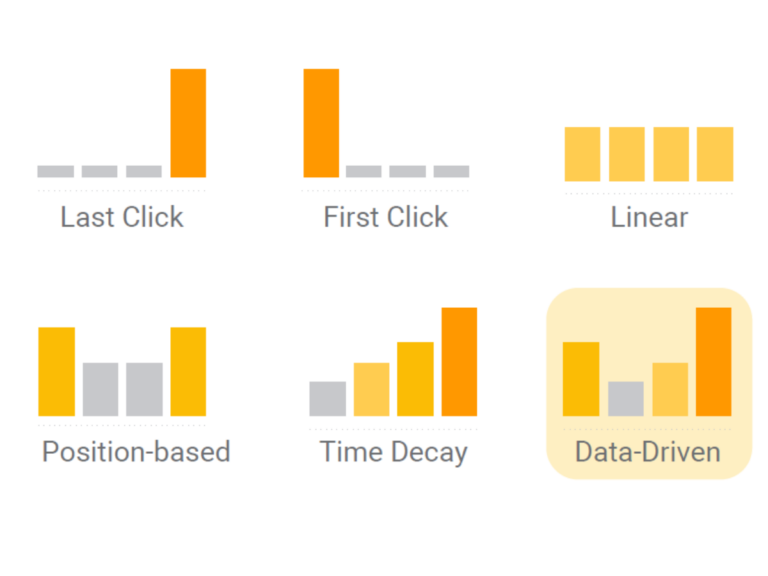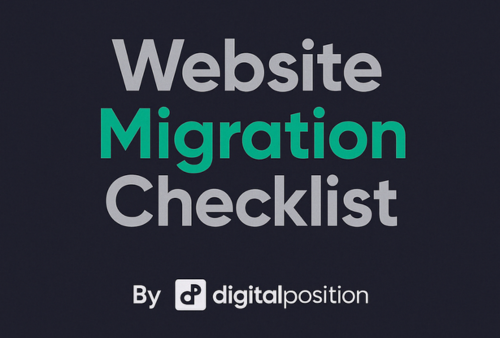Getting your Shopify store to rank well on a SERP (search engine results page) can feel like an uphill climb – followed by another uphill climb, then some tumbles back down the hill, and then up again.
Unfortunately, there’s no magic formula that says A + B + C = Position 1 – at least not anymore. But that doesn’t mean you’re doomed to be a 21st-century Sisyphus rolling a boulder uphill for eternity. Digital Position is here to offer 3 quick and simple ways to improve SEO in Shopify, giving you a better chance of reaching the top of that hill.
How to Improve SEO On Shopify
As an SEO services agency, it’s our job to think critically about how to optimize Shopify for SEO. In reality, there are a million and one ways to improve the SEO value of your ecommerce website and we can’t cover them all in one blog post. But we can offer three quick tips to move the needle (or the boulder, if you prefer).
Follow Meta Data Best Practices
Yep, we’re starting with SEO 101 here. Meta titles and meta descriptions. Guess what? They still matter and are one of the easiest ways to optimize for SEO in Shopify.
You may be under the impression that individually written meta descriptions are no longer relevant. After all, doesn’t Google decide what shows up under your meta title in a SERP? In a way, yes. Just because you add a nifty, perfectly optimized meta description to your Shopify page, doesn’t mean Google is going to show that to a searcher.
That said, your meta data is an HTML element on your page that Google can read and interpret – so having a good meta description and title is still considered an SEO best practice.
Meta Data Best Practices
The most important thing to remember when writing your meta titles and descriptions is that the goal isn’t to keyword stuff or catch the attention of a searcher by using all caps or emoticons. It’s to entice a user to click on your listing by showing them your page is relevant to their search. We write for people, after all, not Google (okay, we write a little bit for Google, too).
When writing meta titles, it’s best practice to include your page’s target keyword and your business name while keeping the entire thing under 60 characters. Ultimately, let a searcher know what the page is about and who created the page.
For example, a page about Shopify SEO services may use the meta title:
Shopify SEO Experts & Services | Digital Position™
Our target keyword is “Shopify SEO”, we (Digital Position) included our brand name so you know where you’re going, and we speak to our target audience – those looking for Shopify SEO services – all in a tight 50-character package. Now, are we saying this meta title is the gold standard? Not necessarily. But it does check all of the best practice boxes.
When Google started rolling out auto-generated meta descriptions, a lot of SEOs started wondering if it is even worth it (or possible) to follow best practices anymore? We think so. Despite Google’s constantly changing SERPs, here are a few things we know:
- Google typically truncates meta descriptions after a certain length.
- Google may use all or part of your meta descriptions in a SERP.
- Your meta description can entice a user to click through to your website.
Given the above, here’s our own take on meta description best practices.
First, keep the length of your meta description close to 155-160 characters. The general consensus is that Google will truncate your description after 920 pixels. Not sure if your meta description is the right length? Use our organic listing previewer tool to test it.
Next, use a keyword in your meta description. While keywords in meta data may not be a direct ranking factor, Google will sometimes bold keywords in meta descriptions if they match the searcher’s query – drawing more attention to your listing.
Finally, include a call to action to try and improve click-through rate to your site. A quick “Shop now!” is sometimes all it takes to encourage a click when you’re trying to optimize your Shopify site for SEO.
Build Out Content on Collection Pages
Your collection pages are one of the best places to optimize for SEO on Shopify. This is where you want to improve your search visibility for high-volume, high-intent keywords that directly relate to your products.
So, how do you optimize for these vital keywords? Start by beefing up your content. Users landing on a collection page typically want to look at products, so you don’t need to greet them with a dissertation on whatever it is you’re selling. But adding a few hundred words below the fold can give you more space to incorporate keywords, educate your customers, and pitch your product.
One of the best ways to do this is through answering some frequently asked questions.
Here’s an exercise we love to do. Go to Google and search for the keyword you want your collection page to rank for. Look below the ads and the first few organic listings. Almost certainly, you’ll see the “People Also Ask” section – a sleeper choice for SEO optimizations that have a ton of potential.
By utilizing a question-and-answer format in your collection page content and marking it up with FAQ schema, you can be eligible to show there even if you aren’t officially ranking on page one for your keyword.
Use Long-Tail Keywords to Create Educational Blogs
We just talked about using your collection page content to target high-volume, high-intent keywords, which are typically short-tail keywords. When trying to improve SEO on Shopify, use your blog to target long-tail keywords. Not only does this give you the opportunity to rank higher for less competitive keywords, but it also provides ample opportunities for internal linking.
Blogging on Shopify is a piece of cake once you nail down some of the best practices. Utilize these blogs to educate your potential customers and build trust while also linking to relevant collection pages or products. Remember to use the target keyword of the linked URL as your anchor text to show Google you’re keeping things relevant.
Need Help Optimizing your Shopify SEO?
As we mentioned, there’s no golden formula for how to improve SEO on Shopify that’s guaranteed to work. But that doesn’t mean it’s not worth pursuing. Digital Position specializes in ecommerce SEO and can help you get your Shopify SEO set up and optimized for success.




no replies